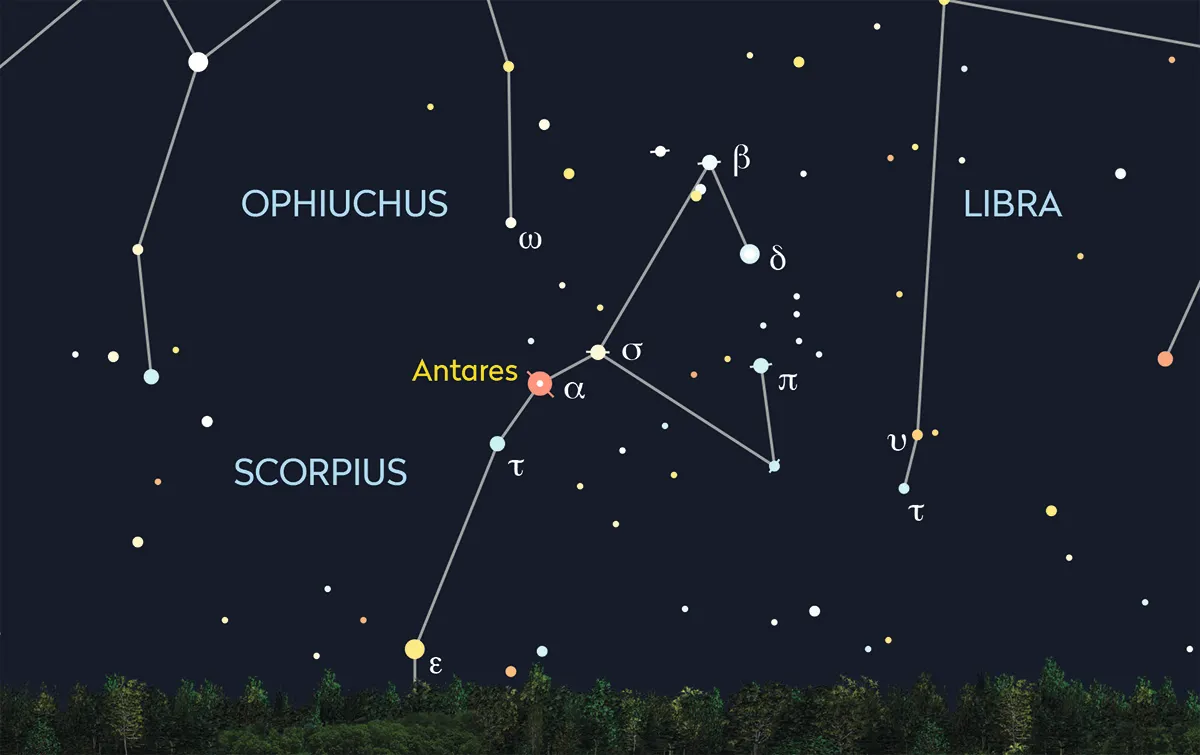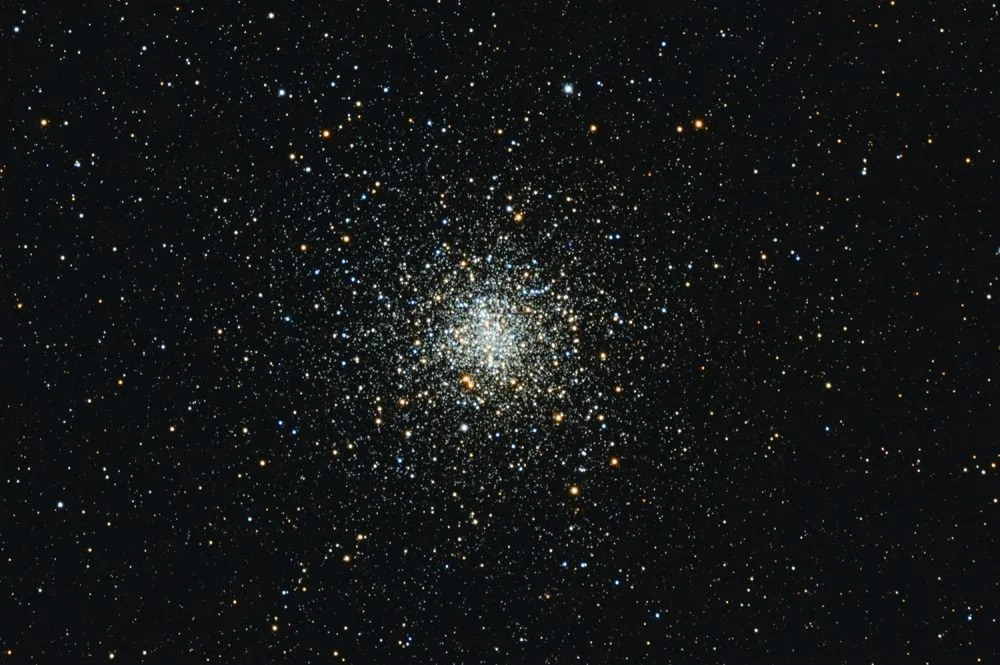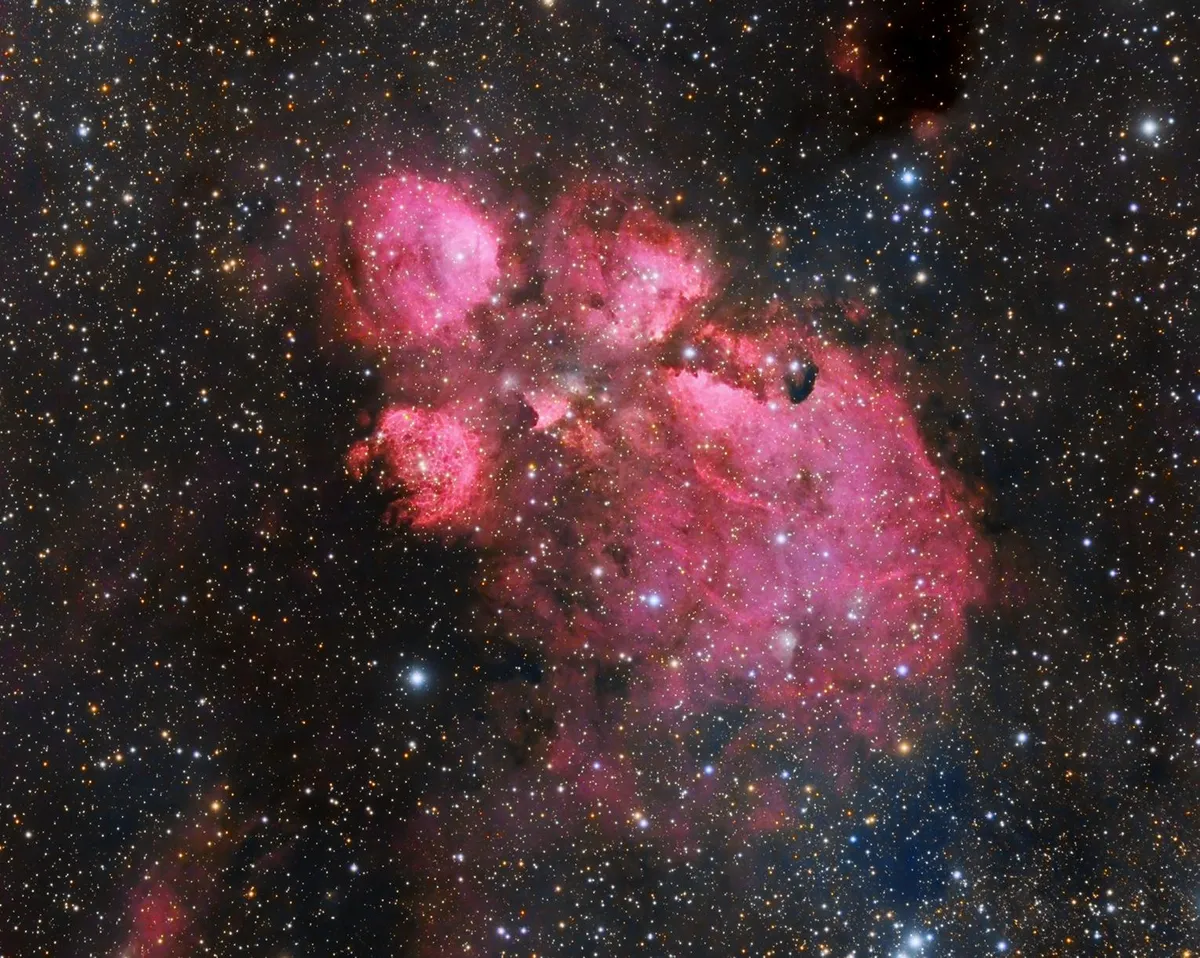Scorpius is one of the most distinctive and easily recognised constellations in the night sky, and has captivated the imaginations of stargazers for millennia.
It’s renowned not only for its red, bright heart, the star Antares, but also for its ancient mythological roots, stunning deep-sky objects and a rather contentious historical relationship with its neighbour Libra.
Scorpius mythology

The constellation Scorpius is steeped in myth, most notably Greek mythology, representing the scorpion sent by the Earth goddess Gaia (or sometimes Artemis or Hera, depending on which version you follow) to kill the great hunter Orion.
According to the story, Orion boasted that he would slay every animal on Earth, angering the gods.
To punish his conceit, a giant scorpion was sent to confront him and sting the hunter to death.
The gods placed both Orion and Scorpius in the sky, but on opposite sides – ensuring that they would never appear together.
When Scorpius rises in the east in summer, Orion sets in the west, and vice versa, symbolising their ongoing cosmic chase.
Observing Scorpius

Due to its southerly declination, Scorpius is best seen from the Southern Hemisphere, where it reaches its highest point in the sky in winter; July nights find the constellation almost overhead.
The Northern Hemisphere doesn’t get quite as good a view, with Scorpius appearing low in the south over the summer months, but if you can locate it, it’s well worth the effort.
From North American latitudes (40° north), the entire scorpion, including its tail, can be seen.
From the British Isles, only the head and heart are visible, the tail never rising above the horizon.
One of the 48 classical constellations listed by the second-century Greek astronomer Claudius Ptolemy, it remains one of the 88 modern constellations recognised by the International Astronomical Union.
Scorpius is notable for its curved formation, which closely resembles the traditional depiction of a scorpion with tail and stinger.
The main shape of the scorpion is made up of about 18 bright stars, and this distinctive shape and proximity to the Milky Way make it a favourite among amateur astronomers.
Brightest star

The most prominent star in Scorpius is Antares, a red supergiant and one of the brightest stars in the night sky.
‘Antares’ in Greek means ‘rival of Mars’, the star’s reddish hue meaning that it often resembles the Red Planet in the sky.
Antares lies about 550 lightyears from Earth and shines with a luminosity 75,000 times that of our Sun.
Zodiac

Although Scorpius is officially a zodiac constellation, the Sun spends little time there, transiting in only six days, towards the end of November each year.
In fact, the neighbouring constellation of Ophiuchus, the Serpent Bearer, is home to the Sun for a considerably longer period, at approximately 19 days.
Deep-sky objects in Scorpius

Scorpius lies along the plane of the Milky Way, making it rich in deep-sky objects. Several star clusters and nebulae are visible within its boundaries.
Messier 4 (M4) is a large globular cluster just west of Antares. At about 7,200 lightyears away, it’s one of the closest globular clusters to Earth, and through binoculars or a telescope you’ll see a sparkling swarm of ancient stars.
Heading further south, Messier 6, the Butterfly Cluster, is an open star cluster that gets its name from its symmetrical, butterfly-like shape.
It lies about 1,600 lightyears away and is composed of young, hot stars.

Trickier to see, especially from northerly latitudes, is Messier 7 or Ptolemy’s Cluster (Ptolemy catalogued it in the second century).
M7 is one of the brightest open clusters and is visible to the naked eye under dark skies. It’s also the most southerly Messier object, and so a challenge to locate the further north you are.
Scorpius is also home to the Cat’s Paw Nebula (NGC 6334) and the Lobster Nebula (NGC 6357).
These are emission nebulae: enormous stellar nurseries where new stars are being born.
The Southern Hemisphere offers the best views of these two objects.
Scorpius, Libra and the stolen claws

An intriguing aspect of Scorpius lies in its historical connection with neighbouring constellation Libra.
In ancient times, the stars that now form Libra were considered part of Scorpius: the scorpion’s claws, in fact.
And this is evident in the names of several of Libra’s stars.
For example, Zubenelgenubi (Alpha Librae) means ‘the southern claw’ in Arabic, while Zubeneschamali (Beta Librae) is ‘the northern claw’.
These names reflect the time when the claws of Scorpius stretched across what is now the constellation Libra.

It wasn’t until Roman times that these stars were redefined as part of a separate constellation symbolising the scales of justice.
This reclassification is a fascinating example of how human culture and astronomical knowledge evolve in tandem.
While the mythological scorpion lost its claws in the formal star charts, the stars’ names still preserve the memory of when they formed part of the menacing creature in the summer sky.
is Scorpius one of your favourite constellations? Share your observations and images with us by emailing contactus@skyatnightmagazine.com

